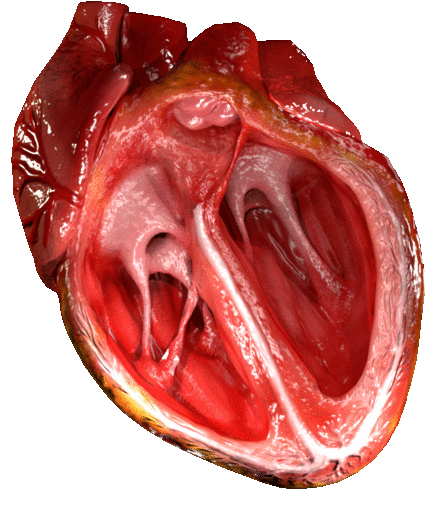⚠️ Test Running in Guest Mode
Important: Your final mark will not be saved.
3.1.1.2 Cardiovascular system GapFill
You must fill all the gaps before clicking ‘Check Answers!’

The cardiovascular system responds to the different physiological environments that come with rest, exercise and recovery. There are three key values that represent the level of stress placed on the cardiovascular system:
- Heart rate – The number of times the heart beats per
- Stroke volume – The amount of blood ejected from the left ventricle of the heart per
- Cardiac output (Q̇) – The volume of blood ejected from the left ventricle per
heart rate x =
Let's take a look at the changes in these values that reflect how the cardiovascular system responds to rest, exercise and recovery.The average resting heart rate of a healthy adult is ~70 bpm
. A true reading could be masked by a range of factors including caffeine intake, sleep, arousal and anxiety. Fitter individuals tend to have a resting heart rate, as this is reflective of a stronger heart (cardiac hypertrophy) and a more efficient transport of oxygen in the blood and extraction at the muscle. A resting heart rate of <60 bpm is termed ' '.
- The average resting stroke volume for a 70 kg adult male is ~70 mL. The change in resting heart rate with greater fitness levels is compensated by stroke volume.
- As we know the average values for resting heart rate (~70 bpm) and stroke volume (~70 mL), the resting value for cardiac output must be ~ L. This remains the same at rest and, unlike resting heart rate and stroke volume, is independent of fitness.
- As we exercise, there is an increased demand for oxygenated blood at the working muscles, which causes an increase in heart rate. Heart rate may also increase before we start exercising due to activation of the sympathetic nervous system, which is known as rise. This is followed by a steep rise in heart rate at the onset of exercise to meet the stark change in oxygen demand, until a steady state is reached once the delivery of oxygen has caught up with its demand. If the intensity of exercise increases to the extent where the demand for oxygen exceeds its delivery, heart rate will rise until a peak is reached and exercise will cease or intensity will be reduced shortly afterwards. In certain conditions, such as hot environments or during prolonged exercise, heart rate can progressively rise without any increases in exercise intensity or cardiac output. This phenomenon is known as , and is caused by a reduced stroke volume from reductions in blood plasma volume during exercise. It may be offset by adequate hydration to reduce the loss of plasma volume through sweat.
- Initial increases in stroke volume during exercise occur in parallel with exercise intensity. This is dictated by the increased return during exercise – the volume of deoxygenated blood returning to the right atrium from the rest of the body. This greater return of blood to the heart increases ventricular filling (end diastolic volume), which causes the ventricular walls to stretch and recoil with greater contractile force, resulting in a greater stroke volume. This mechanism is known as . Stroke volume plateaus at ~ % of VO2 max, meaning that any further increase in exercise intensity, and the resultant need for increased blood flow, is determined by heart rate.
- As the earlier equation indicates, cardiac output will increase during exercise due to the combination of increased heart rate and stroke volume, and this increase will remain until maximal exercise intensity is met due to the constant rise in heart rate until the maximum. During sub-maximal exercise, the demand for oxygen at the muscles is less, thus the increase in cardiac output from rest is lower than that needed for maximal exercise. The more developed cardiovascular system of trained individuals means they are able to produce a greater cardiac output than their untrained counterparts, allowing them a greater efficiency and capacity of blood flow delivery to the working muscles during sub-maximal and maximal exercise.
As soon as exercise ceases, the recovery period will start. Heart rate will suddenly drop and then undergo a more gradual reduction. This will be accompanied by an elevated stroke volume for a period of time in order to maintain cardiac output enough so that any that might have been accrued at the muscle is repaid and waste products are removed.